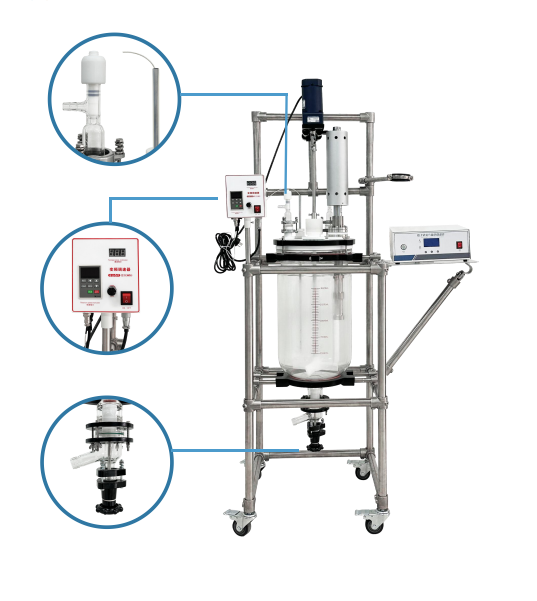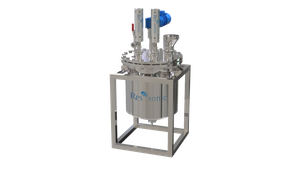I. Core Concepts
Diesel: A traditional petroleum-based fuel.
Formic acid: A simple carboxylic acid with the molecular formula HCOOH. It is considered a promising liquid hydrogen carrier and biomass-based fuel.
Homogenization: Here, it refers to the mixing of two immiscible liquids (such as polar formic acid and non-polar diesel) into a stable, finely divided, and uniform mixture, known as an emulsion.
Ultrasonic technology: A key tool for achieving this homogenization.
II. Why Homogenize Formic Acid with Diesel?
Mixing formic acid with diesel may serve several purposes:
As a Green Additive/Alternative Fuel:
Partially Replaces Fossil Fuels: Formic acid can be produced by hydrogenating carbon dioxide using renewable energy sources (such as solar and wind power), making it a "green" liquid fuel. Mixing it with diesel can reduce dependence on fossil fuels and lower carbon emissions.
Improving Combustion Properties: Formic acid contains oxygen, which theoretically could help improve diesel combustion efficiency, resulting in more complete combustion and, consequently, reduced soot and particulate matter (PM) emissions.
Using for hydrogen reforming as a hydrogen carrier:
This is a more cutting-edge concept. Formic acid can be reformed at low temperatures over a catalyst to produce hydrogen and carbon dioxide.
The idea is to inject a formic acid-diesel emulsion into the engine cylinder. Using waste heat or a catalyst, the formic acid decomposes in situ, releasing hydrogen.
The addition of hydrogen can significantly improve diesel combustion, significantly increase thermal efficiency, and significantly reduce nitrogen oxide and particulate matter emissions. This is a concept known as "in-cylinder hydrogen production."
III. Why choose ultrasonic homogenization?
Formic acid and diesel are immiscible liquids. Simple mechanical stirring only produces a rough, unstable mixture that quickly separates. Ultrasonics is one of the leading technologies for producing ultrafine, stable emulsions.
The principle of ultrasonic homogenization (cavitation effect):
The ultrasonic generator generates a high-frequency electrical signal, which is converted by a transducer into high-frequency mechanical vibrations. This is transmitted to the probe (needle) via a horn. The probe vibrates at an extremely high frequency (e.g., 20 kHz) in the liquid, generating alternating high- and low-pressure cycles.
Cavitation Bubble Formation: During the low-pressure cycle, microbubbles in the liquid rapidly expand.
Cavitation Bubble Collapse: During the subsequent high-pressure cycle, these bubbles are compressed and violently collapse at extremely high speeds (>500 m/s).
Homogenization: The moment a cavitation bubble collapses, it generates enormous shear forces, shock waves, and microjets within a very small space. These extreme forces violently shred the surrounding liquid, breaking the formic acid phase into nano- or micron-sized droplets. These droplets are evenly dispersed within the continuous diesel phase, forming a highly stable emulsion.
IV. Ultrasonic Homogenization System and Process Flow
System Components:
Ultrasonic Generator: Power source and control brain.
Transducer: Converts electrical signals into mechanical vibrations.
Amplifier: Amplifies the vibration amplitude.
Probe (needle): The portion immersed in the liquid that directly generates cavitation. Typically made of titanium alloy for corrosion resistance.
Reactor: The vessel that holds the diesel and formic acid mixture.
Process Flow:
Add a specific ratio of diesel and formic acid (and optionally an emulsion stabilizer) to the reactor.
Immerse the ultrasonic probe below the liquid surface.
Turn on the equipment and set the parameters (power, amplitude, treatment time, and temperature).
The ultrasonic wave begins to work, rapidly transforming the liquid into an emulsion.
After treatment, a formic acid-diesel emulsion fuel with fine, uniform particle size distribution and high stability is obtained.
V. Technical Advantages and Challenges
Advantages:
Efficiency: Energy is applied directly to the liquid, resulting in high efficiency and rapid homogenization.
Uniformity and Stability: Nano-sized droplets can be produced, resulting in an emulsion with far greater stability than mechanical stirring.
High Controllability: Droplet size can be precisely controlled by adjusting parameters such as power and time.
No need for large amounts of emulsifiers: The strong mechanical force reduces the reliance on surfactants.
Scalability: Linearly scalable from laboratory scale to industrial flow rates.
Challenges and Considerations:
Material Compatibility: Formic acid is corrosive to metals, so system materials (e.g., probes and reactors) must be corrosion-resistant (e.g., titanium alloys, certain stainless steels, or glass).
Long-Term Emulsion Stability: Even though ultrasound can produce extremely fine droplets, without a suitable emulsifier, separation may occur during long-term storage. Research is needed to optimize the emulsifier formulation.
Impact on Fuel Properties: A comprehensive assessment of the mixed fuel's properties, such as lubricity, viscosity, calorific value, and low-temperature fluidity, is required to ensure compatibility with existing diesel engines.
Cost: The cost of ultrasonic equipment and operations must be weighed against the benefits (emission reduction and fuel substitution).
Safety: Formic acid is corrosive and irritating, requiring appropriate safety precautions.
Summary
Ultrasonic diesel formic acid homogenization is an innovative process that utilizes advanced ultrasonic cavitation technology to blend formic acid, a green additive or hydrogen carrier, with diesel to produce a high-performance, stable emulsion fuel.
Its core value lies in:
Providing a potential path to reduce emissions and increase efficiency in diesel engines (via the addition of oxygenated fuels or in-cylinder hydrogen production).
It provides an efficient, reliable, and controllable method for preparing emulsions, overcoming the limitations of traditional mixing techniques.
This technology is currently primarily in the laboratory development and pilot phase. Widespread application in actual engines requires addressing a series of engineering challenges, including materials, stability, cost, and comprehensive engine bench testing. However, this is undoubtedly a very promising research direction in the energy and environmental fields.

 English
English













